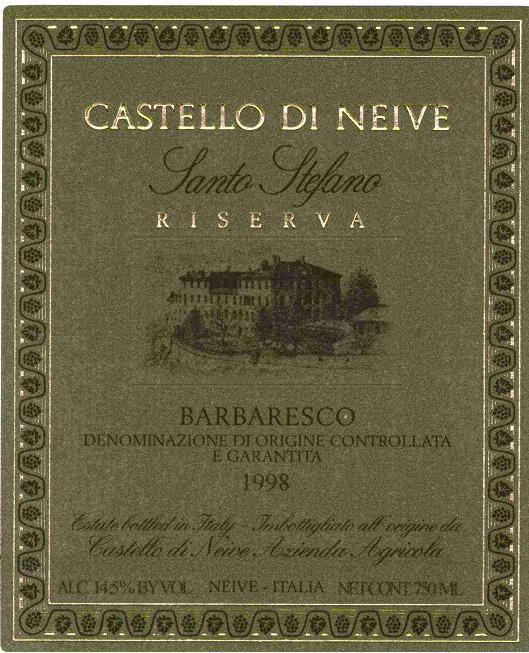1998 Barbaresco Red Blend
Castello Di Neive Santo Stefano, a distinguished red blend from the renowned Barbaresco region, beautifully exemplifies the region's winemaking prowess. With its deep red hue, this wine showcases compelling aromas of dark fruits, leather, and subtle spices that invite you to indulge. On the palate, the wine presents a captivating balance of rich and vibrant flavors, marked by layers of ripe blackberries and cherries intertwined with hints of earth and floral notes. The mouthfeel is structured yet elegant, with well-integrated tannins lending support without overwhelming the experience. Its bright acidity brings an invigorating freshness, making it a delightful choice for pairing with savory dishes or enjoying on its own. Overall, the 1998 vintage of Castello Di Neive Santo Stefano is a stunning representation of the Barbaresco terroir, embodying complexity and refinement.
Castello Di Neive Santo Stefano, a distinguished red blend from the renowned Barbaresco region, beautifully exemplifies the region's winemaking prowess. With its deep red hue, this wine showcases compelling aromas of dark fruits, leather, and subtle spices that invite you to indulge. On the palate, the wine presents a captivating balance of rich and vibrant flavors, marked by layers of ripe blackberries and cherries intertwined with hints of earth and floral notes. The mouthfeel is structured yet elegant, with well-integrated tannins lending support without overwhelming the experience. Its bright acidity brings an invigorating freshness, making it a delightful choice for pairing with savory dishes or enjoying on its own. Overall, the 1998 vintage of Castello Di Neive Santo Stefano is a stunning representation of the Barbaresco terroir, embodying complexity and refinement.




